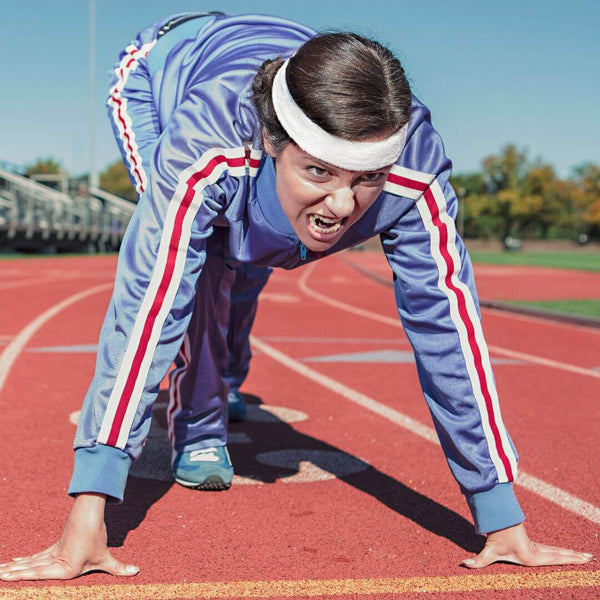
The older we get, the more important it is to exercise regularly and have some sort of fitness routine. But let’s face it – the gym can be an intimidating place for multiple reasons, including the lack of a solid exercise routine. If you are new to the gym or just starting a new routine, there are steps to make your workouts more efficient and maximize your success. Transforming your body and becoming fitter is a long process that can be painful or discouraging sometimes, especially if you feel lost in the gym. Little things like setting goals and staying hydrated can make a major difference in your progress. In this article, we will go through everything you need to know and do before you start a new workout program.
Table of Contents
- Importance of Fitness
- Assess Baseline Health & Fitness Level
- Set Fitness Goals
- Track Progress
- Warm-Up and Cool-Down
- Start Slowly
- Understanding The Exercises/Routine
- Recovery Methods
- Stay Hydrated
- Stay Motivated
- FAQs
Importance of Fitness
People often associate the word fitness strictly with the gym or resistance training, but fitness also includes mental health and how efficiently you perform activities in your daily life. According to the physical activity guidelines from the Office of Disease Prevention, adults should perform a minimum of 150 to 300 minutes (2.5-5 hours) of moderate-intensity exercise, 75 to 150 minutes (1.25-2.5 hours) of intense exercise, or a combination of both weekly. They also recommend moderate or greater intensity strength training that involves all major muscle groups on two or more days per week.¹ Regular exercise is the key to living a long, healthy life, and establishing a consistent daily routine makes the process more efficient.
Exercising consistently has numerous valuable benefits, including:
- Improve Physical Fitness: This refers to the amount of physical activity your body can endure, such as playing sports, lifting weights, or any time of exercise. Exercise helps improve the body’s physical capabilities, including endurance, strength, and flexibility. This also includes promoting weight loss, which is one of the top reasons people exercise.
- Mental Health: Exercise has been proven to release endorphins that help improve mood, reduce anxiety, and relieve stress. Aerobic exercise improves blood flow throughout the body, including to the brain, which helps improve brain health. Long-distance runners often talk about “runner’s high,” which is the euphoria from prolonged exercise.
- Improve daily life: This is where functional training comes in, as higher levels of fitness help improve everyday life. Having a fitness routine helps give people more energy and makes everyday activities, such as carrying groceries, easier, leading to a better quality of life.
- Live longer: Countless studies have shown that consistent exercise and healthy habits lead to a longer life. It also helps prevent chronic diseases, including cardiovascular disease, diabetes, high blood pressure, osteoporosis, and types of cancer.
- Better sleep: Another major benefit of maintaining a high fitness level is improved sleep. When you exercise, you expend your energy, making it easier to fall and stay asleep. If you exercise regularly at the same time, it will help improve the body’s internal clock, known as the circadian rhythm.
Below is the list of what you need to know and do before starting a new program. We will break down each section and provide links for further reading.
New Workout Checklist:
- Assess Baseline Health & Fitness Level
- Set Fitness Goals
- Track Progress
- Warm-Up and Cool-Down
- Start Slowly
- Understanding The Exercises/Routine
- Recovery Methods
- Counting Macros
- Stay Hydrated
- Stay Motivated
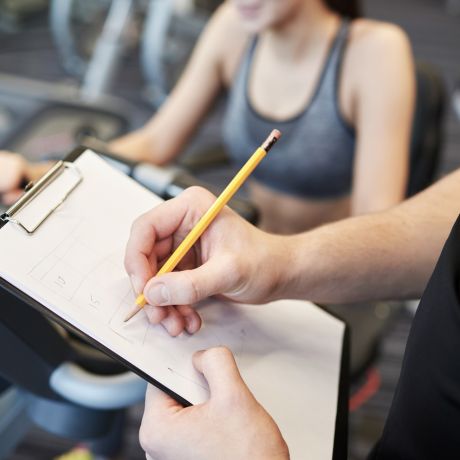
1. Assess Baseline Health & Fitness Level
Anyone who is starting a new workout plan should assess their health and fitness level. Depending on your age and level of physical activity, it may be wise to speak with your doctor or get a physical exam before starting. This is especially important for people with underlying health issues or injuries.
The average adult man burns roughly 2,000-3,000 calories daily, while the average female burns around 1,600 to 2,400 daily. To gain weight, you need to eat more calories than you burn; to lose weight, you need to burn calories. To maximize your gains, you should calculate key baseline figures, like your basal metabolic rate (BMR).
Aside from seeing a healthcare professional, hiring a personal trainer is another great way to assess your weight training or cardio experience level. Several gyms offer one session with a personal trainer for free with sign-up, so be sure to take advantage.

2. Set Fitness Goals
This may seem like a no-brainer for people doing strength training or trying to lose weight, but setting fitness goals is important when starting a new workout routine. Some people casually exercise at the gym with no real end goal or proper exercise program. Setting measurable goals, such as losing ten pounds in a month or increasing your bench press by 25 pounds, helps to keep you on track and stay motivated. Setting specific goals is also a great way to track your progress. This is significant because when you hit a plateau, that is a great time to make changes to your exercise program to “shock” the muscles.
![]()
3. Track Progress
As we discussed, setting goals and tracking your progress is an excellent way to maximize your exercise plan. Some of the ways you can track your progress include:
- Before and after photos/progress pics
- Workout journal including weight/sets/reps
- Body measurements (biceps, waist, chest, etc.)
Having a gym partner or personal trainer to exercise with is another excellent way to track progress because someone else is also holding you accountable.
We have an article all about how to take the Best Progress Pictures, which can be trickier than you would think.
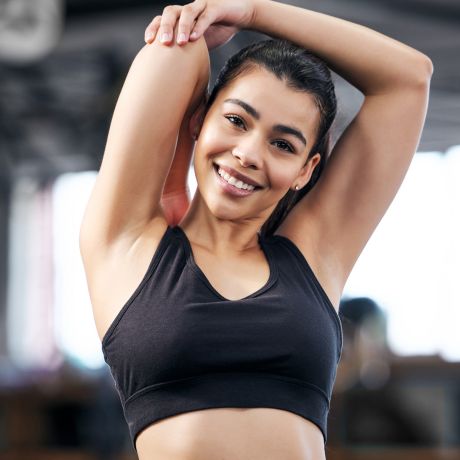
4. Warm-Up and Cool-Down
One of the most important parts of a workout routine is the warm-up phase and cool-down. A proper warm-up routine helps to prepare the body before you start exercising by increasing blood flow and loosening the muscles. Dynamic stretching involves controlled movements, such as arm swings and leg kicks, that are used with a full range of motion to mimic the movements you will be performing. Dynamic stretching should always be done before starting an exercise because it prepares the muscles for activity.
Static stretching, where you hold a specific stretch for an extended period, should be used after your workout as a cool-down. Static stretching helps to relax and elongate the muscles after exercise to improve recovery and flexibility. This is one of the most common mistakes athletes and gym-goes make, as they commonly static stretch before their workout. To learn the best exercises for a warm-up, check out our article 10 Dynamic Warm-Up Bodyweight Exercises With Full Video.
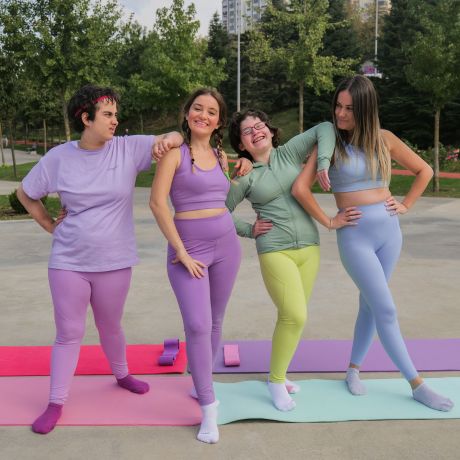
5. Start Slowly
One of the biggest reasons people fail to progress in their fitness journey is overdoing it. Regardless of your workout routine, it’s vital to start slowly and gradually increase as your body adjusts to the new program. Overtraining can be disastrous because it hinders gains by placing the body in a catabolic state and places the body at higher risk for injury. Always listen to your body to prevent injuries – minor soreness is perfectly normal, but if you feel pain or are overly drained, it’s not worth pushing yourself.
To learn more about this topic, check out our article How To Avoid Overtraining and Burnout In Fitness.
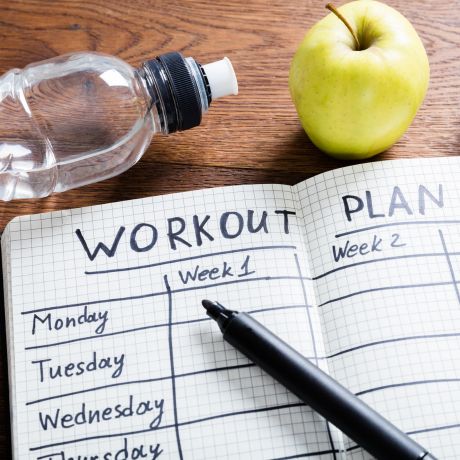
6. Understanding The Exercises/Routine
Understanding how the different exercises work and programming them correctly in the routine is arguably the most critical aspect of starting a new program. If you don’t know how to perform an exercise correctly, you put yourself at risk of injury, and you won’t see the desired results. Countless resources are available to educate yourself on the proper form for various exercises, including our website and YouTube. This is another example of where having a gym partner or trainer can be useful. If you don’t have these options, don’t be afraid to ask a stranger in the gym – most gym-goers would happily help.
If you are unsure about the proper form or how to perform certain exercises, a good starting point would be to read our article 17 Best Total Body Dumbbell Exercises (& 4 Total Body DB Workouts). This article gives step-by-step instructions on how to perform some of the most common exercises.
If your goal is weight loss, take advantage of the different cardio machines until you find one you can tolerate. The Stairmaster is my favorite cardio machine to burn excess calories and shed pesky body fat.
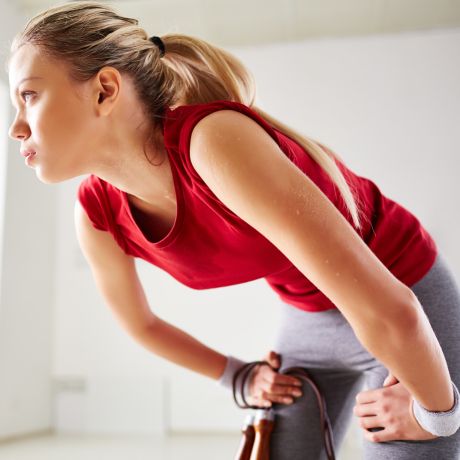
7. Recovery Methods
Besides the actual workouts, rest days and what you do outside the gym are just as important as the exercise to make progress. Strength training and physical activity are meant to break the muscles down; the actual growth occurs outside the gym. Recovery includes anything that helps the body repair, including nutrition, hydration, stretching, massage, cold water therapy, heat therapy, cupping, foam rolling, and other therapeutic techniques. For a basic introduction to recovery, check out our article, Your Guide To Muscle & Workout Recovery.
When you first start exercising or change your routine, you will likely experience delayed onset muscle soreness (DOMS), which is when soreness ramps up 24-72 hours after the workout. This happens because the micro-tears of the muscles slowly cause inflammation as blood rushes to the area, which creates pressure. Stay hydrated and replenish your body’s vitamins to combat DOMS. It would help if you planned your workouts around this or use the technique of active recovery. Active recovery is when you perform a low-intensity exercise, such as walking, swimming, or an easy workout with lighter weights, rather than doing nothing. To learn more about helping the body rest, check out our article, Active Recovery Explained: Benefit, Workouts, & Tips.
Other phenomenal recovery techniques that have exploded in popularity recently include cold water therapy (cold plunging) and heat therapy (saunas). To learn more about these techniques, check out our articles, The Complete Guide To Cold Therapy and 3 Types of Heat Therapy (Benefits For Fitness & Which One Is Best).
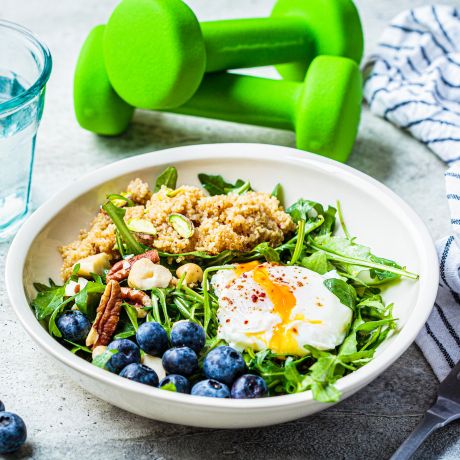
8. Counting Macros
One of the most important factors when starting a new program is having a diet that supports your activity level. Exercising and lifting weights burns calories that need to be replenished in order to grow and recover. Once you have calculated your daily caloric intake requirements, you can use meal prep and counting macros to reach your goals. Counting the macronutrients of each meal to track your daily protein, carbohydrates, and fats ensures you’re not eating too much or too little. Following a clean diet and counting macros can help you achieve your goals much quicker, regardless of whether you want to gain or lose weight.
To learn more, check out our article Everything You Need To Know About Counting Macros and How To Successfully Use Meal Preparation For Weight Loss.
To learn more about specific diets, check out our articles, The Best 7-Day Meal Plan For Muscle Gain and The Best 4-Week Meal Plan For Weight Loss.
For people with specific diets, check out:

9. Stay Hydrated
Staying hydrated can fall into the recovery or nutrition category, but it deserves its own spot because it is crucial when exercising. Dehydration can weaken muscles, lead to protein denaturation, and increase the risk of headaches or cramps. Studies have also shown that dehydration can lead to a greater risk of DOMS and place the person at injury risk due to the reduced intracellular water.² You should drink plenty of water before, during, and after workouts, especially at higher temperatures. A general rule of thumb in bodybuilding is to strive for at least a half-gallon of water daily. To learn about products that can improve your hydration during workouts, check out our article, 7 Best Electrolyte Supplements To Fuel Your Workouts.

10. Stay Motivated
Staying motivated to stick with a workout routine is one of the most difficult things for people, especially when you are out of shape. People often expect instant results or lose interest when they don’t see progress, especially after the first week. This is why a significant amount of the January “New Year, New Me” gym sign-ups are gone by February. Everyone has days when they don’t feel like going to the gym or exercising. You need to approach the routine with the right mindset and think long-term, which is why setting goals is so important. The longer you can consistently exercise and force yourself into a healthy routine, the easier it will be to stay focused. This is also where having a trainer, lifting partner, or gym buddy comes in handy to hold you accountable.
FAQs
In this section, we address some of the most common questions related to starting a new exercise program.
How long should you use the same exercise routine for strength training?
With weight training, the body eventually gets acclimated to a routine after a prolonged period, which causes your progress to halt or hit a plateau. You should make at least minor adjustments in the core exercises (different grips, angles, etc.) and the order of exercises performed. Try new exercises or change the entire routine after four to twelve weeks. It all depends on the person.
Do I need to warm up before my workouts?
Yes, it is crucial to warm up before any type of physical activity, especially a strength workout. Perform at least five to ten minutes of dynamic stretching (active movements) to warm up and static stretching after the workout to cool down.
Does it matter what time I exercise?
Yes, but the time of day is not important. Some people like to exercise in the morning to start their day, while others prefer an evening workout. The more important aspect is the time related to your last meal, as you should not lift weights on an empty stomach.
My body is very sore from my new workout. What should I do to avoid or help the muscle soreness?
Being sore is perfectly normal after exercise, especially during the first week of a new routine. You should anticipate being sore 24 to 48 hours after exercise due to DOMS, so you can plan your off day or active rest around this. For example, if you do chest and back on Monday, try doing lower body on Tuesday or a different body part. Staying hydrated and eating healthy, including lots of protein, also help improve recovery.
Besides the actual workouts, what else can I do to improve my fitness and overall health?
The workouts are just a piece of the fitness puzzle, as you spend most of your day away from the gym. To improve overall fitness, you should add more activity to your daily routine (taking the stairs, etc.), drink as much water as possible, follow a clean diet high in protein, and get enough sleep. It can also be helpful to pick up a hobby that involves physical activity, such as rock climbing, water aerobics, or taking a dance class.

Outro
Whether you are a veteran gym-goer starting an exercise routine for the first time or someone who’s never exercised, there are steps to make the process more efficient. The most important things to focus on when starting a new workout include:
- Assessing your baseline.
- Setting goals.
- Tracking progress with pictures or a journal.
- Having a warm-up and cool-down.
- Starting slowly.
- Understanding the exercises.
- Using recovery methods.
- Counting macros.
- Staying hydrated.
- Finding a way to maintain motivation.
Take advantage of any resources that are available to you, including sessions with a trainer if possible. Once you start making exercise a part of your daily life, you will progressively feel better and find it easier to stick with it.
References
- U.S. Department of Health and Human Services. “Physical Activity Guidelines for Americans 2nd Edition.” 2018.
- Cleary, Michelle A, et al. “Dehydration and Symptoms of Delayed-Onset Muscle Soreness in Normothermic Men.” Journal of Athletic Training, vol. 41, no. 1, 2006, pp. 36–45, www.ncbi.nlm.nih.gov/pmc/articles/PMC1421497. Accessed 18 Feb. 2024.





